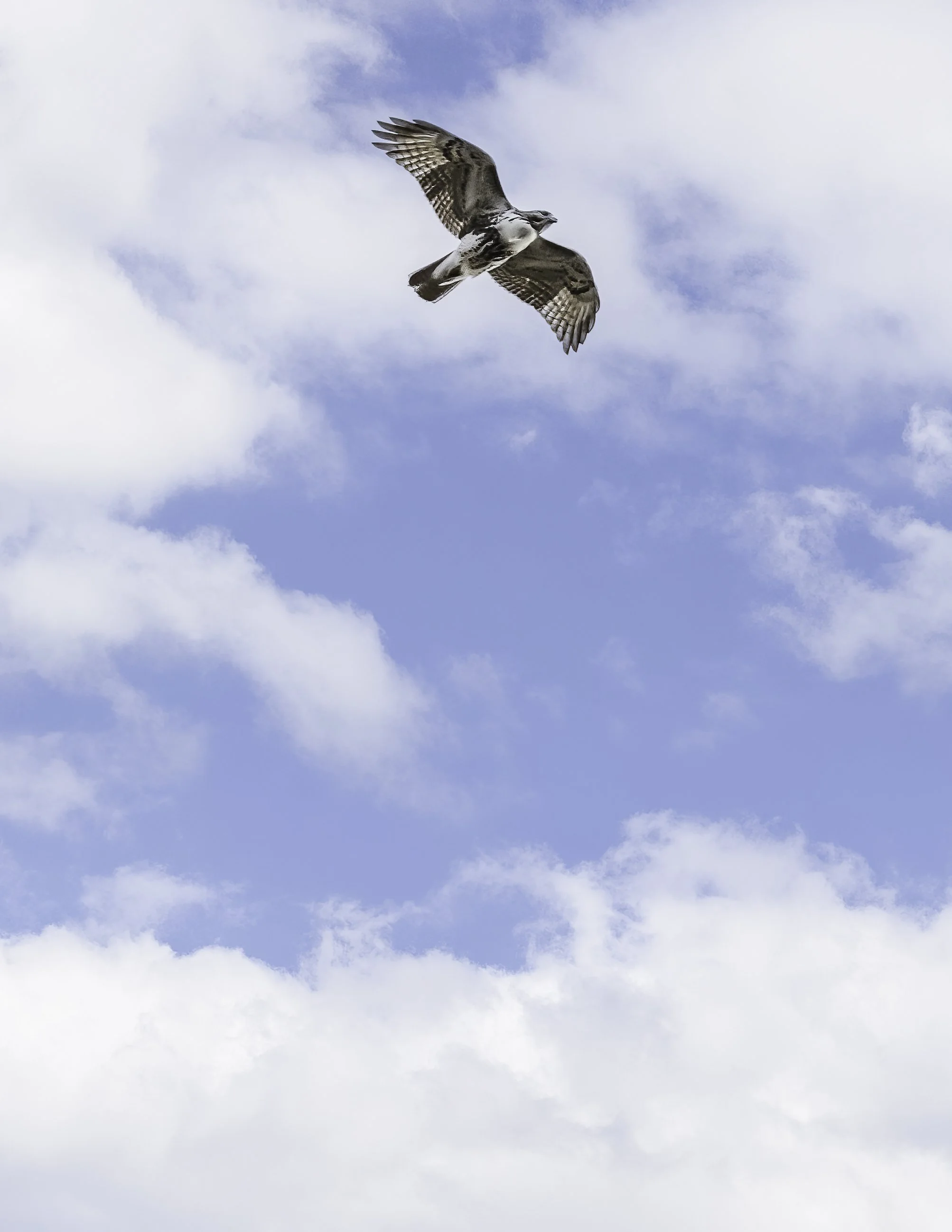Hawkwatch III
As we approach the end of October, we are getting into the peak of the Golden eagle migration period. Now this is nothing like we hope to experience in September when the Broadwinged hawks come through North America by the hundreds of thousands. In our best years, we can expect anywhere from 500-1000 Broad-winged hawks. This year, we barely broke 100….the second poor count for us in two years. Back to Goldens. For our count, 5 - 10 Golden eagles in a season would be exceptional. Well, today, we had our first Golden eagle of the year. Sadly, it was seen before I arrived on the mountain this morning, so I will have to post an image of this beautiful bird that I took on Bear Mountain several years ago.
Golden eagle - Bear Mountain Hawkwatch 2018
The image above was taken in 2018 and was the last Golden eagle that our leader at the time, Joe Scordato, ever saw. Joe spent many years manning the Bear Mountain Hawkwatch as an observer and later along with veteran birder Ed Tracey as the leader of the team. On this day, it was my wife Sharon that first spotted this bird approaching from Anthony’s Nose on the east side of the Bear Mountain Bridge and called it out to Joe. Sadly it was the last Golden eagle of many that Joe would see as he passed away later that winter. He is sorely missed by those who had the pleasure of counting hawks on the ridge with him. One of a kind and a master of his craft.
Bald eagle - Bear Mt Hawkwatch
One of the birds that was most numerous today was the iconic Bald eagle seen here in an earlier shot from the Bear Mt Hawkwatch. Most of our birds today were at a fairly high altitude and did not avail themselves for any photographs to be taken in close proximity. As a comparison to the Golden, however, I thought I would use this shot today and position it directly below the golden for comparison. They are both magnificent birds….strong powerful hunters and a wonder to behold. Fortunately for those of us in New York State as well as many others in the country, the Bald eagle is one of the greatest comeback stories in natural history. 50 years ago, this species numbered only two individuals in New York. Today, the Department of Environmental Conservation estimates that the population is now over 400 strong. During the winter months, we get a boost in the population as many birds from the north come down to our section of the Hudson River to take advantage of the open water and the fish it provides.
Kiting Red-tailed hawk Bear Mt Hawkwatch 10/28/25
Another raptor we had passing over Bear Mountain today was the Red-tailed hawk. It appeared that most of these birds were mature adults and many were taking advantage of the stiff winds in the upper layer of the atmosphere. Red-tails are known for their ability to “kite” which is to hang suspended in the air simply by letting the headwinds beneath their wings provide enough lift to keep them aloft. We watched the bird seen in the photograph above hang apparently motionless for at least 5 minutes in the exact same location. Framed by the bare branches of a nearby tree, he barely moved a degree and never flapped his wings. Another amazing aerialist.
Perched adult Red-tailed hawk Bear Mt Hawkwatch 10/28/25
Could it be the same hawk? Several minutes after watching and photographing the “kiting” hawk, this individual came down to rest on a nearby limb. The plumage of the adult birds are striking and the red tail for which it is named is oh-so-obvious on the mature birds.
It was not all fun and games for the Red-tails today, however. Towards the end of the day, we saw a mature red-tail heading south only to be intercepted and harassed by a lightning fast Peregrine falcon. The mock passing attacks it made towards the hawk were only threatening and no direct contact was seen, but the hawk certainly wasted no time in picking up the pace as it headed out of the territory on its trek south. Watching the interaction of the various birds of prey on the mountain is one of the most enjoyable aspects of participation in hawk watches.
Peregrine falcon heading for one of our Red-tails Bear Mt Hawkwatch 10/28/25
While we are here primarily to observe and count the migrating hawks through the area, it’s always of interest to see what other birds show up. Lately, we’ve been seeing an increase in the numbers of Blue jays and the smaller azure bird, the Eastern bluebird. If the winter is mild enough, some of these bluebirds will stick around, but the small flocks which we’ve seen lately look like they may be staging…..getting ready to head south. Like many other birds, Eastern bluebirds undertake seasonal migrations primarily in response to temperature changes and food availability. In the northern parts of their range, they typically migrate southward during the late fall to avoid harsh winter conditions and to find sufficient insect prey. These birds often travel short to moderate distances, sometimes only moving from northern states to more southern regions within the United States. Migration usually occurs during the day, and bluebirds rely on open habitats such as farmlands, orchards, and clearings, making stopover sites critical for resting and feeding. Are these the birds that we are seeing moving through? Possible!
One of several Eastern bluebirds that stopped by at the Hawkwatch today. Quite the handsome little bird!





